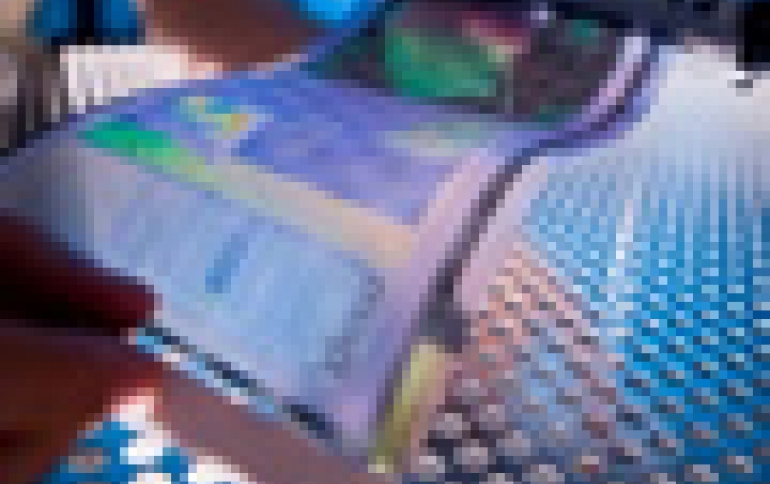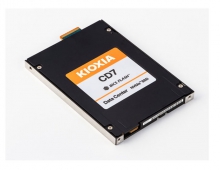
HP and Arizona State University Demo Flexible, Unbreakable Displays
HP and the Flexible Display Center (FDC) at Arizona State University (ASU) ahve developed a prototype of affordable, flexible electronic displays.
Flexible displays are paper-like computer displays made almost entirely of plastic. This technology enables displays to become easily portable and consumes less power than today?s computer displays. Popular applications for the technology could include electronic paper and signage.
The production feat is a milestone in the industry?s efforts to create a mass market for high-resolution flexible displays. Plus, from an environmental standpoint, the displays leapfrog conventional display processes by using up to 90 percent less materials by volume.
Mass production of such displays can enable production of notebook computers, smart phones and other electronic devices at much lower costs since the display is one of the more costly components.
The unbreakable displays were created by the FDC and HP using self-aligned imprint lithography (SAIL) technology invented in HP Labs, HP?s central research arm. SAIL is considered "self aligned" because the patterning information is imprinted on the substrate in such a way that perfect alignment is maintained regardless of process-induced distortion.
SAIL technology enables the fabrication of thin film transistor arrays on a flexible plastic material in a low-cost, roll-to-roll manufacturing process. This allows for more cost-effective continuous production, rather than batch sheet-to-sheet production.
"The display HP has created with the FDC proves the technology and demonstrates the remarkable innovation we?re bringing to the rapidly growing display market," said Carl Taussig, director, Information Surfaces, HP Labs. "In addition to providing a lower-cost process, SAIL technology represents a more sustainable, environmentally sensitive approach to producing electronic displays."
The first practical demonstration of the flexible displays was achieved through collaborative efforts between the FDC and HP as well as other FDC partners including DuPont Teijin Films and E Ink. To create this display, the FDC produces stacks of semiconductor materials and metals on flexible Teonex Polyethylene Naphthalate (PEN) substrates from DuPont Teijin Films.
HP then patterns the substrates using the SAIL process and subsequently integrates E Ink?s Vizplex imaging film to produce an actively addressed flexible display on plastic. E Ink?s Vizplex bi-stable electrophoretic imaging film enables images to persist without applied voltage, thereby greatly reducing power consumption for viewing text.
The production feat is a milestone in the industry?s efforts to create a mass market for high-resolution flexible displays. Plus, from an environmental standpoint, the displays leapfrog conventional display processes by using up to 90 percent less materials by volume.
Mass production of such displays can enable production of notebook computers, smart phones and other electronic devices at much lower costs since the display is one of the more costly components.
The unbreakable displays were created by the FDC and HP using self-aligned imprint lithography (SAIL) technology invented in HP Labs, HP?s central research arm. SAIL is considered "self aligned" because the patterning information is imprinted on the substrate in such a way that perfect alignment is maintained regardless of process-induced distortion.
SAIL technology enables the fabrication of thin film transistor arrays on a flexible plastic material in a low-cost, roll-to-roll manufacturing process. This allows for more cost-effective continuous production, rather than batch sheet-to-sheet production.
"The display HP has created with the FDC proves the technology and demonstrates the remarkable innovation we?re bringing to the rapidly growing display market," said Carl Taussig, director, Information Surfaces, HP Labs. "In addition to providing a lower-cost process, SAIL technology represents a more sustainable, environmentally sensitive approach to producing electronic displays."
The first practical demonstration of the flexible displays was achieved through collaborative efforts between the FDC and HP as well as other FDC partners including DuPont Teijin Films and E Ink. To create this display, the FDC produces stacks of semiconductor materials and metals on flexible Teonex Polyethylene Naphthalate (PEN) substrates from DuPont Teijin Films.
HP then patterns the substrates using the SAIL process and subsequently integrates E Ink?s Vizplex imaging film to produce an actively addressed flexible display on plastic. E Ink?s Vizplex bi-stable electrophoretic imaging film enables images to persist without applied voltage, thereby greatly reducing power consumption for viewing text.





















